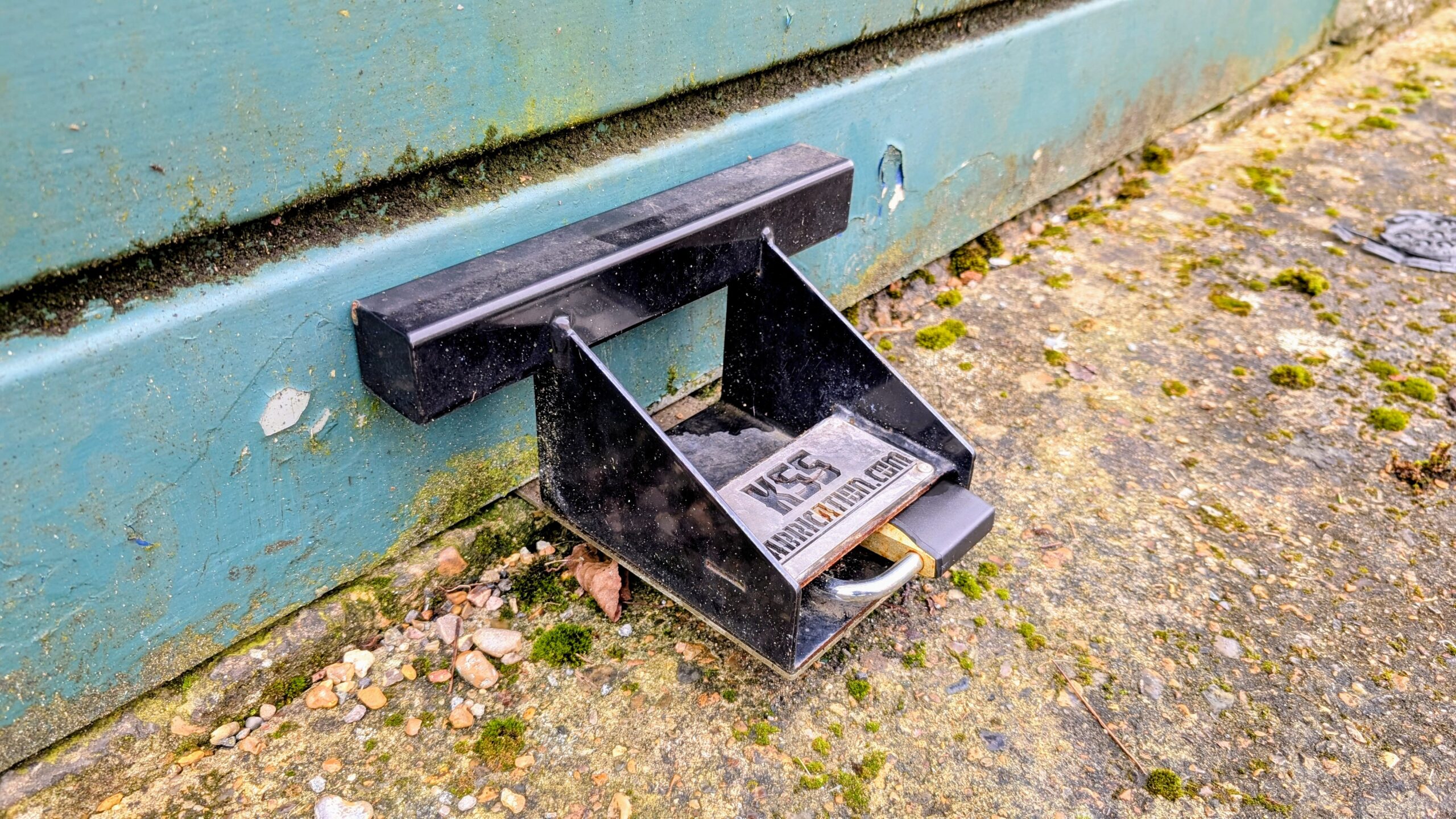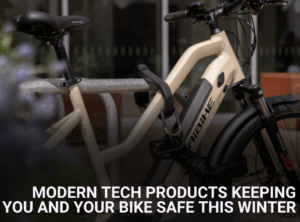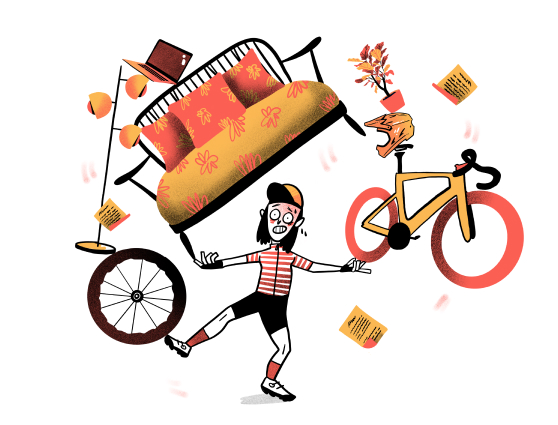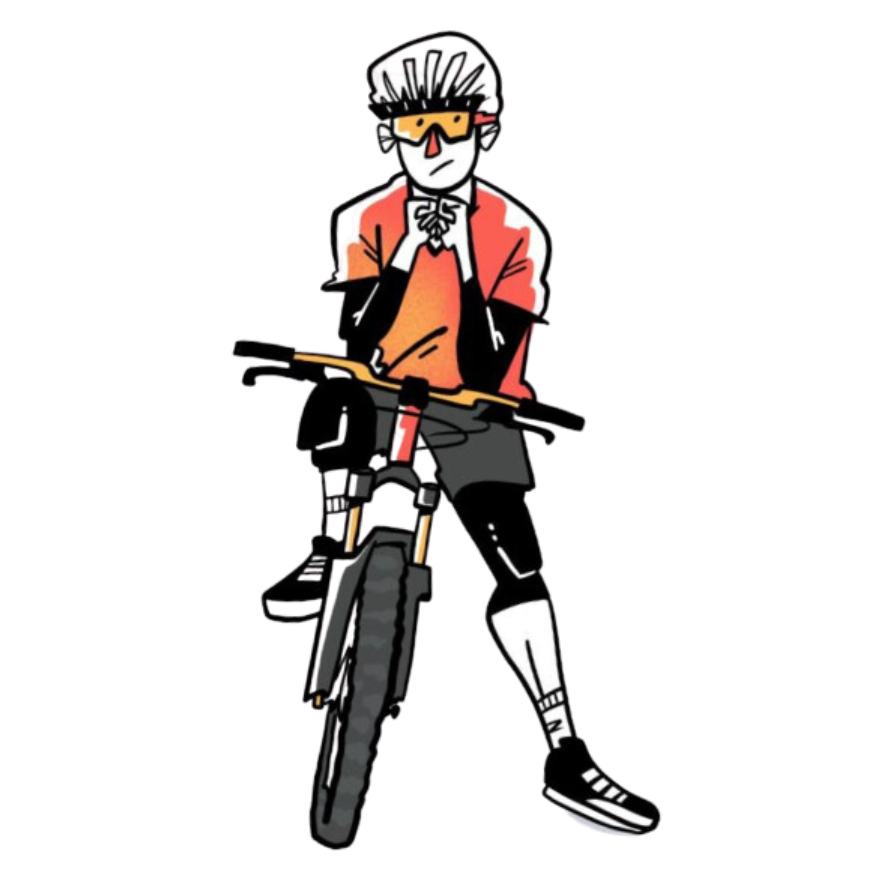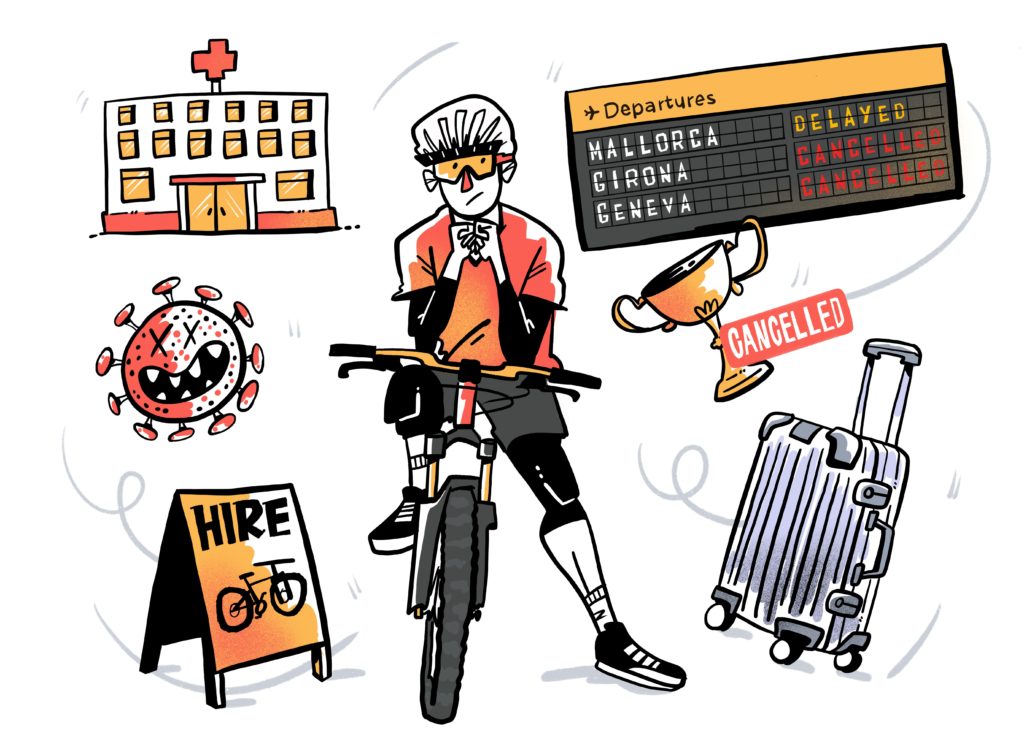Bike theft in public places remains an unfortunate reality, something we see all too often through the lens of our claims team. While Pedal Cover bicycle Insurance does provide cover for bikes locked in public, no policy can cushion the frustration of returning to find your pride and joy gone.
That’s why we believe stopping theft in the first place is far better than dealing with the aftermath. The good news? Many incidents are entirely preventable with a few smart locking habits. In this article, we’ll share some practical, real world advice based on what our claims data tells us works and what doesn’t!
Choose the right lock: Gold or Diamond rated
The strength of your lock is your first line of defence. Unrated locks or worse, budget cable locks are often made of poor quality materials and won’t stop an experienced thief. Always opt for a lock that’s rated Sold Secure Silver, Gold or Diamond. These have been independently tested to withstand real world attack methods, and most cycle insurers (including us) require these ratings to accept a theft claim.
If your bike is worth less than £1,500, Sold Secure Silver is acceptable, but upgrading to Gold or Diamond will give you more peace of mind. For bikes £1,500 and over, you’ll need Sold Secure Gold or Diamond.
Keep the purchase receipt!
You need to be able to prove that you actually owned the lock you are using, so always keep your lock receipt (same goes for bikes-you need receipts!). if you don’t have a lock receipt, please email our customer support team before taking out your policy.
Double up: Use two different locks
Using two different types of locks (e.g. a D-lock and a heavy-duty chain) makes a thief’s job significantly harder. Most carry tools for one type of lock-not both. The extra hassle and time required is often enough to make them move on to an easier target.
Just make sure that both locks meet the minimum Sold Secure ratings. Just remember, a simple café lock won’t cut it as a second layer of defence.
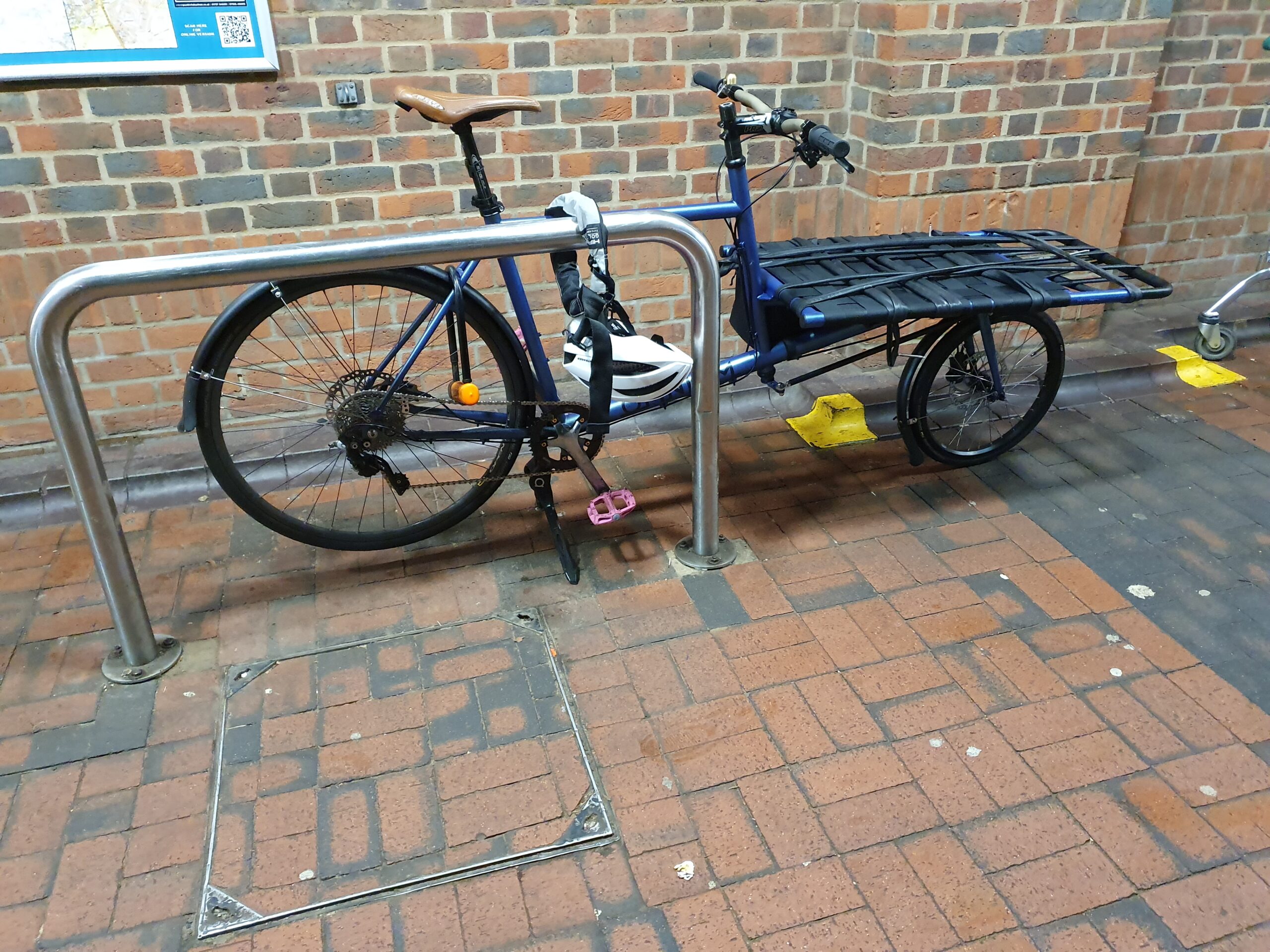
Lock to something that’s going nowhere
It’s surprising how often we see claims where a bike was locked to something that could easily be removed, like a flimsy fence or even another unsecured bike. Your lock is only as good as what it’s attached to. Look for solid, permanent fixtures like thick steel posts, bolted-down bike stands, or heavy-duty ground anchors. It never does any harm to take a photo of your locked bike either, especially if you’re using a Sold Secure Diamond rated locks, as we will waive your excess if your bicycle is stolen.
Mix up where you park
Professional thieves often watch for patterns. If you leave your bike in the same spot every day, it becomes an easy target. Try to vary your parking location when possible. Choose busy, well-lit areas with plenty of foot traffic, and don’t park your bike in the same place overnight.
If your main bike is particularly high-value, consider using a cheaper, less flashy model for commuting or popping to the shops.
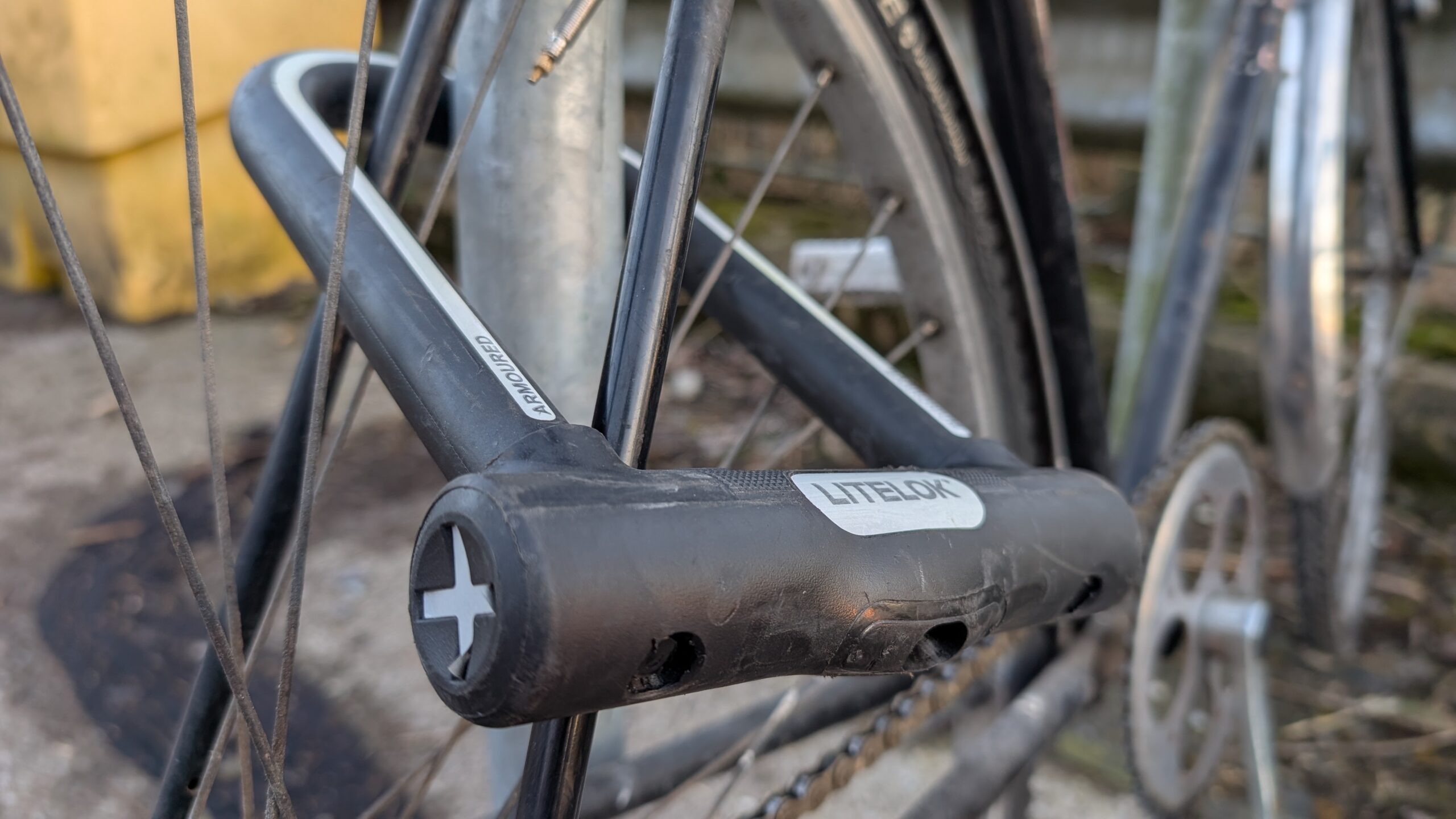
Lock the frame and both wheels
We still see thefts where only the front wheel was secured and everything else vanished, which frankly is heartbreaking, as the whole ordeal could have well been avoided. Always aim to lock the frame and wheels. A D-lock through the rear triangle and wheel is the gold standard.
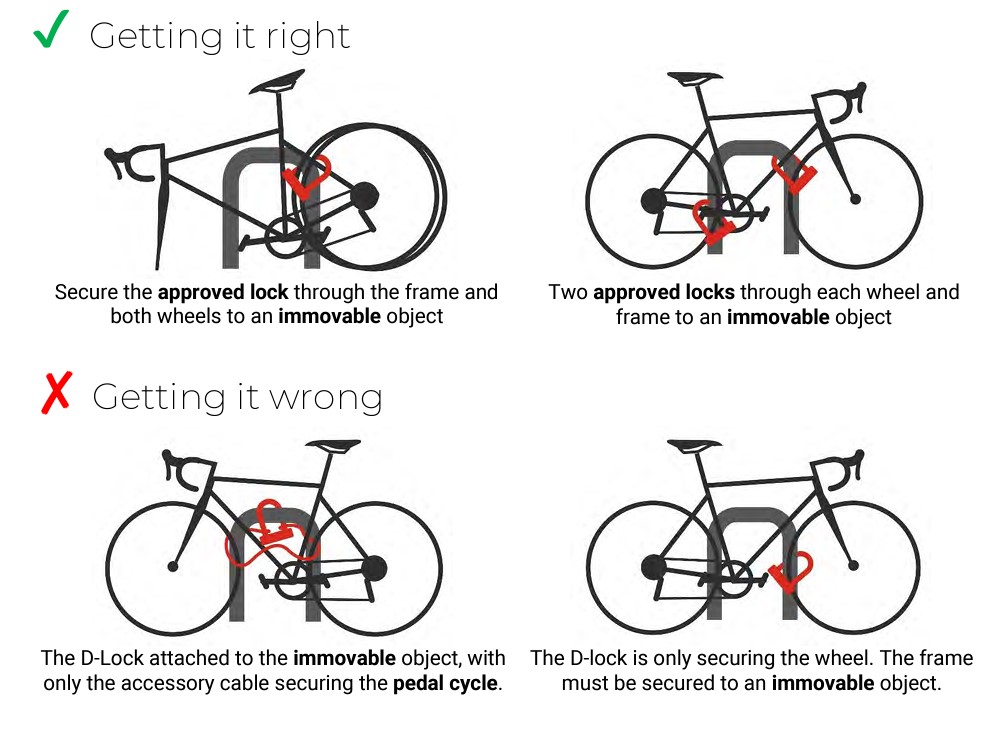
And here’s a tip: when locking through a wheel, avoid going through just the spokes! Make sure your lock loops around the rim instead. Thieves know exactly how to exploit a poor lock-up job!
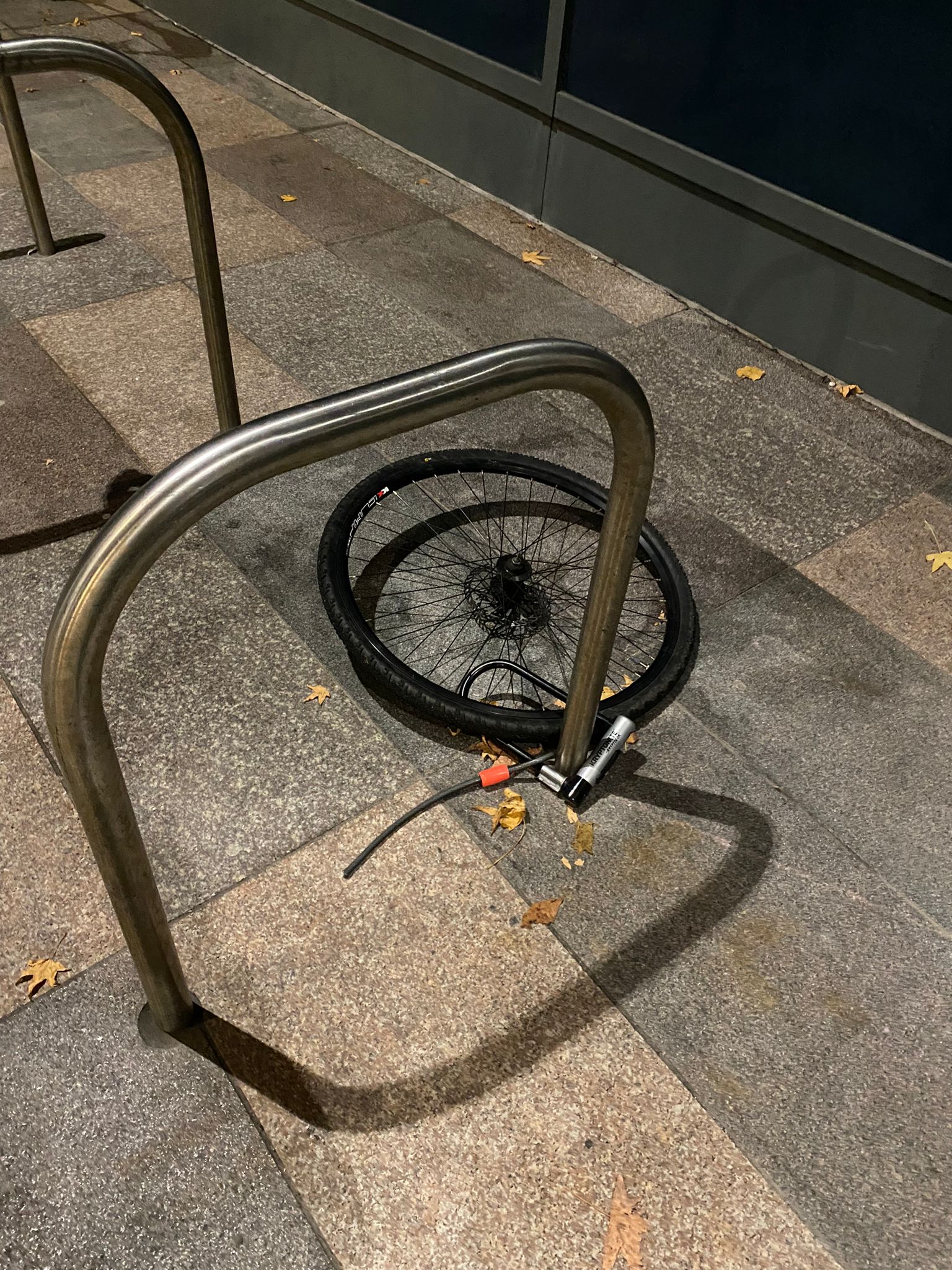
Add a tracker for extra peace of mind
Even the best locking setup isn’t completely foolproof. If your bike is stolen, a discreet tracker could be your best shot at getting it back.
Devices like the Knog Scout combine a loud alarm with GPS tracking and mount directly to your frame. Alternatively, Apple AirTags, when hidden under a bottle cage or saddle, can silently broadcast your bike’s location via the Find My network. While they won’t stop a thief, they can dramatically improve the odds of recovery and have helped police return bikes in a matter of hours.
Secure your components with hex locks
Quick-release skewers are incredibly convenient, but they’re also a big security risk. Replacing them with security skewers or hex bolts makes it much harder for opportunists to steal your wheels, saddle, or seat post without specialised tools.
They’re lightweight, affordable, and offer great protection for commonly stolen parts.
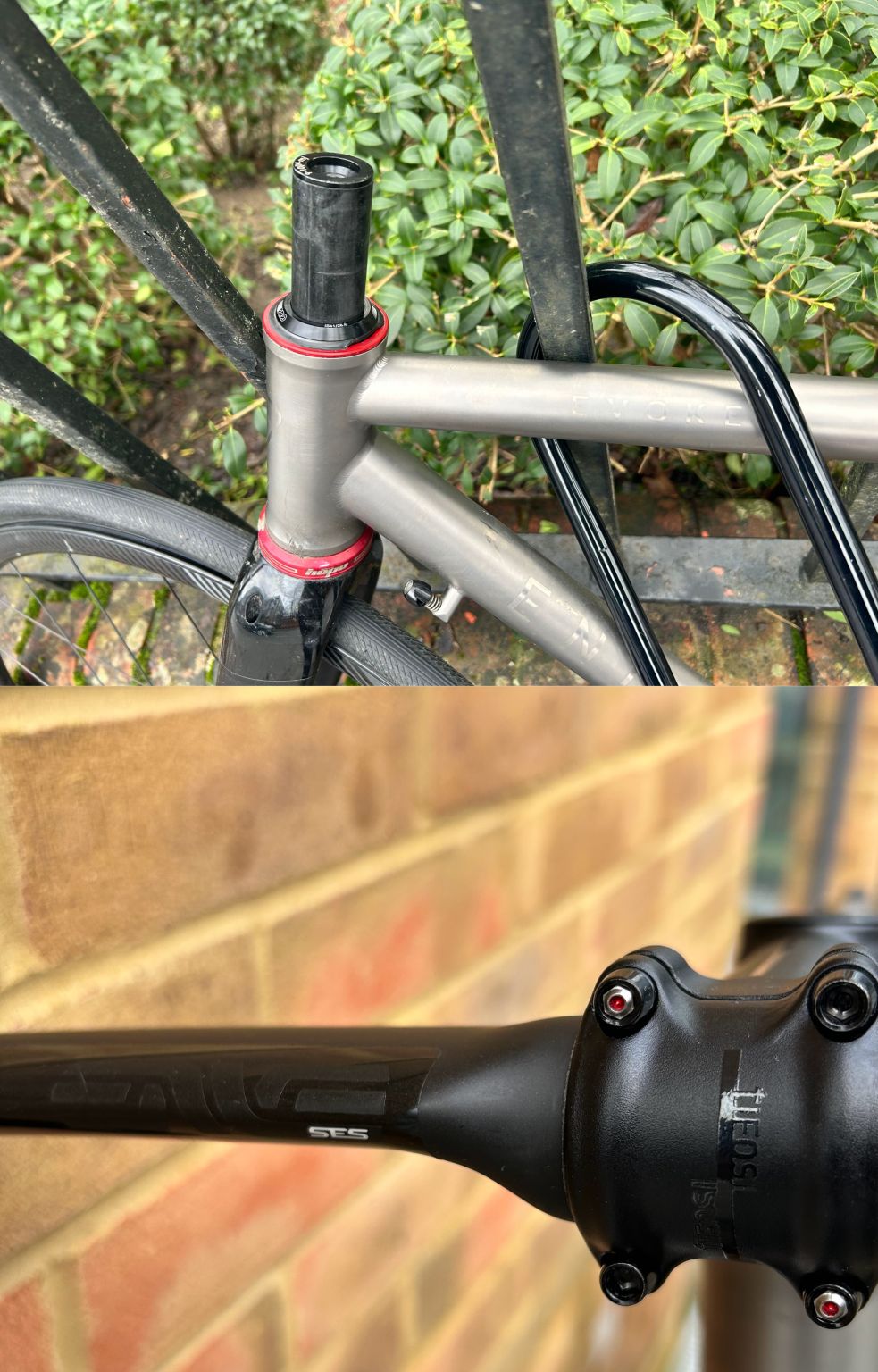
Don’t get complacent at home
Theft from home is not uncommon. Whether your bike lives in a garage, shed, or hallway, treat it like a vulnerable location.
Fit a ground or wall anchor, and lock your bike to it, just as you would in public. Make sure the building is locked and secured, too. We’ve handled claims where thieves simply walked into an open garage and wheeled bikes away.
If you have an up-and-over garage door, make sure it’s rated ‘Secure By Design’. If not, you’ll need to fit a garage door defender or additional locks.
Security cameras or smart alarms can also help with deterrence and evidence gathering but must not be relied upon as part of your main security method.
